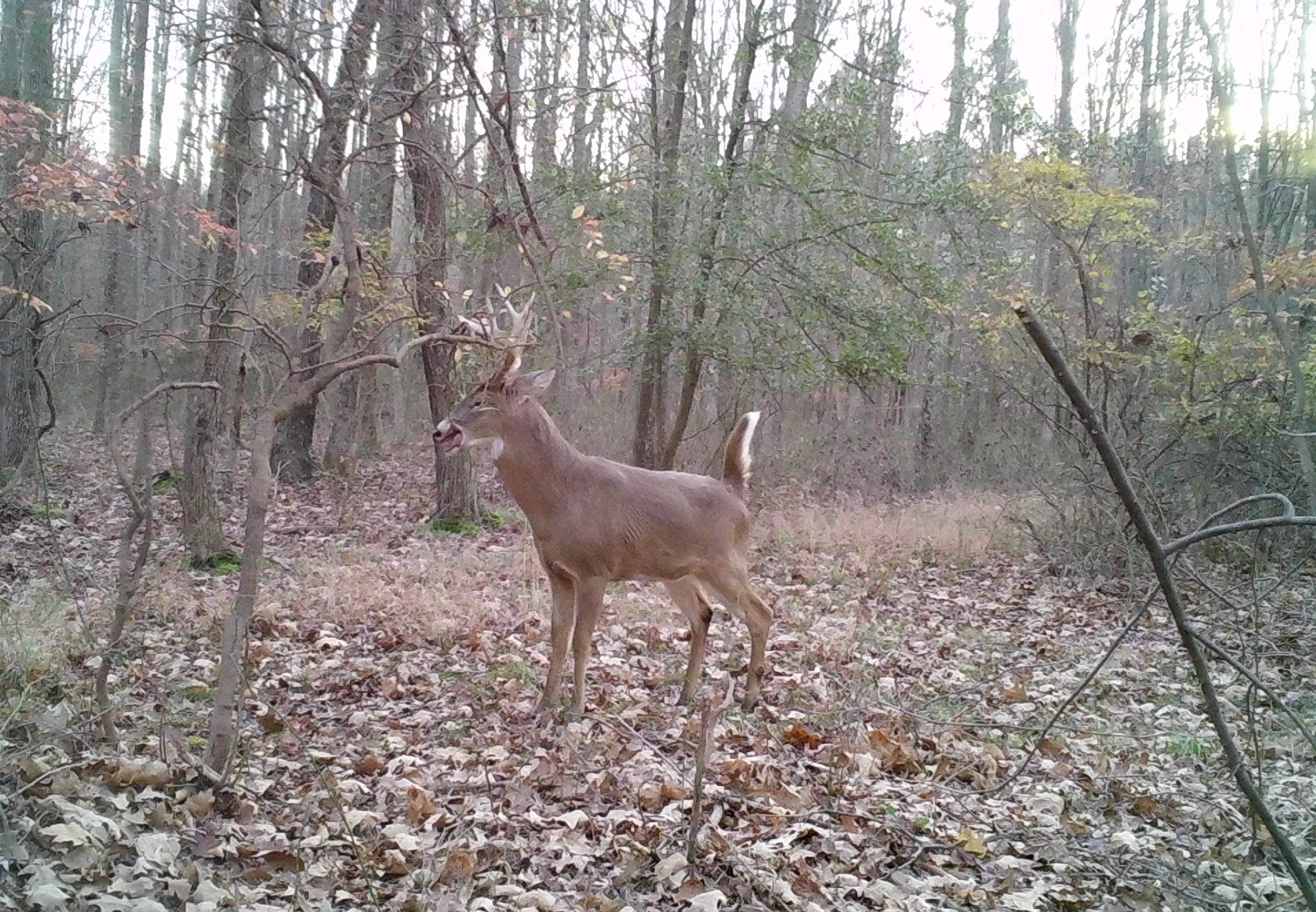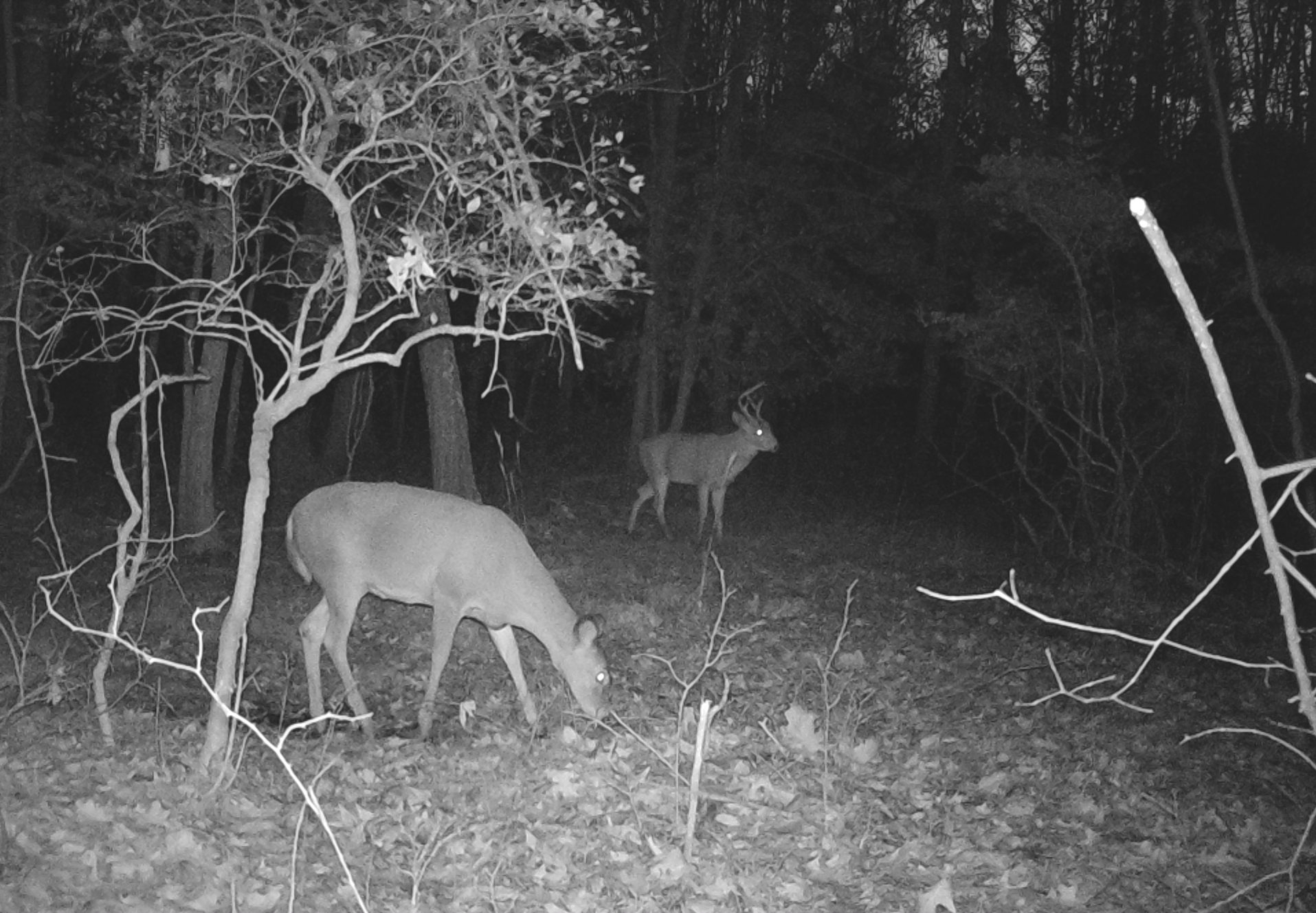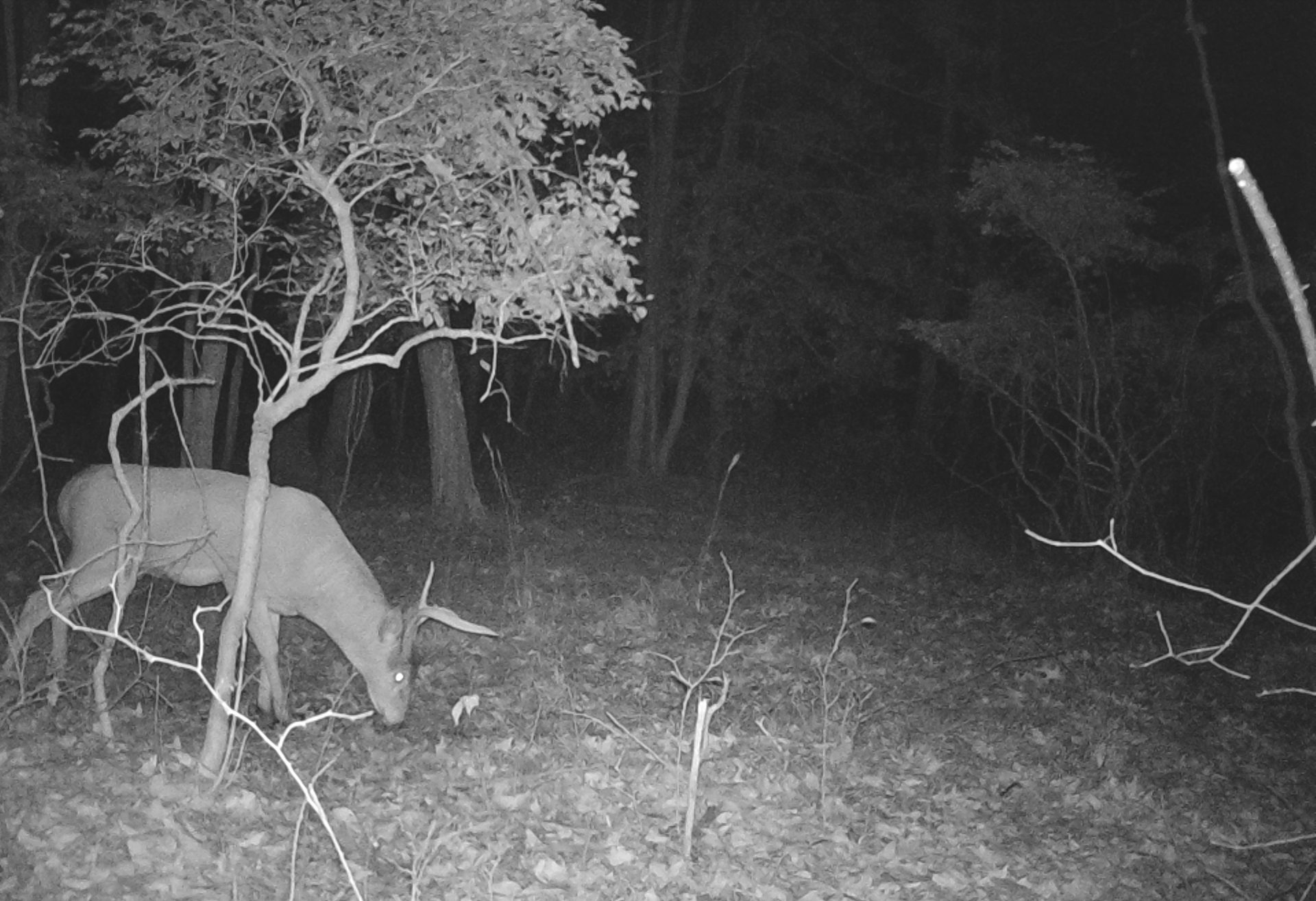With hunting season right around the corner, the rut is on everybody’s mind. The rut is a topic often covered on the blog as is behavior and movement during this most exciting time of year. Typing “rut” into the search function results in 112 posts. We are about to make it 113 posts.
Researchers from the United States used camera traps to monitor scrapes to examine the roll of scraping behavior in the spread of CWD. In a study area of 10,000 acres over a 4 month period, over 3,100 scrape interactions by does, fawns and 225 unique bucks were documented. Used year round but especially during the breeding season, scraping behavior communicates social and sexual status using bodily fluids (urine, saliva, and glandular secretions). Two out of 3 are known to carry infectious CWD prions.

It’s obvious that scrapes play a critical role in deer communications. But they could also play a critical role in spreading infectious disease. This begs the question – should we be adding more scrapes to the landscape?
If scrapes are sites of deer interaction, increasing the number of scrapes in an area could increase those interactions. Hunters have used mock scrapes to attract deer for decades. Are they increasing the risk of spreading disease?

A keynote speaker illustrated how alterations in human behavior resulted in measurable changes in antler composition. This research suggests scrapes should be incorporated into CWD management as they serve as points for prion transfer.
As our Desk Anchor likes to say, you can’t spell prions without pee.
Duane Diefenbach, Chief Foreign Cervid Correspondent
Jeannine Fleegle, National Cervid News Desk Anchor
